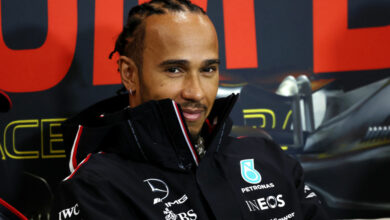Decoding FIA’s TD018 Directive: Formula 1’s Stand Against Aerodynamic Flexing
Unveiling the FIA's Latest Directive and Its Impact on Formula 1's Aerodynamics
In a bid to maintain a level playing field and ensure the integrity of Formula 1 competition, the FIA (Fédération Internationale de l’Automobile) is taking decisive action to tighten regulations surrounding aerodynamic flexing. This move comes in the form of the latest technical directive, TD018, aimed at closing existing loopholes that some teams have exploited to gain aerodynamic advantages.
The Flexibility Controversy
The impetus for this directive stems from growing concerns within the motorsport community about teams manipulating flexibility rules in the construction of their F1 cars’ front and rear wings. Reports from Motorsport.com have shed light on the issue, prompting the FIA to respond with TD018. The directive’s primary goal is to regulate flexible bodywork that goes beyond the established load tests.
Evading Load Tests
Teams have utilized flexible front and rear wing elements to bypass load tests, allowing them to harness significant aerodynamic benefits. By evading these tests, teams could enhance their cars’ performance on the track. This practice undermines the spirit of fair competition that Formula 1 upholds.
Enforcing Article 3.2.2
Central to the FIA’s initiative is Article 3.2.2 of the Technical Regulations. This article addresses components that influence aerodynamic performance due to their lack of rigidity and immobility concerning the frame of reference. The new directive serves as a reminder to teams of their obligation to adhere to this regulation, further reinforcing the FIA’s commitment to maintaining a level playing field.
Gaining Insight into Bodywork
To better understand the intricacies of the bodywork in current F1 cars, the FIA has called upon teams to submit assembly drawings and cross-sections. This detailed documentation will provide valuable insights into how front and rear wing elements are connected to various components, including the nose, rear-wing endplates, pylons, and rear-impact structure.
Upcoming Scrutineering and Implementation
Teams are required to submit their assembly drawings and cross-sections to the FIA by September 8, following the Italian Grand Prix. Scrutineering processes will closely examine these submissions. Looking ahead to the Singapore Grand Prix, teams will need to adhere to compliant designs if any irregularities are found. Effectively, this mandates that the Monza Grand Prix will mark the final instance where teams can utilize existing designs.
Insight from Herbie Blash
Recent weeks have seen insights from FIA’s senior race director advisor, Herbie Blash. Observations made by Blash, including the visible movement of wings during races, have raised questions about flexing. Speaking on the Beyond the Grid podcast, Blash emphasized that the flexing of wing elements remains a significant area of contention within Formula 1.
“I think the only area that I would question today is maybe the flexing of the wing elements, that however much weight the FIA have to put on the wings, when you actually look on a TV on an onboard shot, and you can actually see the wings move.
And I remember I used to sit there with a ruler trying to work out on the screen and Race Control how far that front flap is going down or that rear wing is moving.”
A Combined Effort
Interestingly, this focus on aerodynamic flexing aligns with the timing of the announcement of the 2022 cost cap results. The FIA’s endeavor to maintain fairness in competition extends beyond just technical regulations and encompasses the financial aspects of the sport as well.


